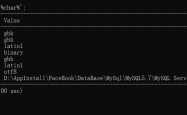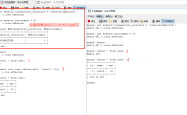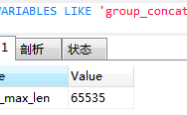在MySQL中,如何轻松找到所有子节点?
吾爱主题
阅读:205
2023-11-03 16:02:00
评论:0
背景
项目中遇到一个需求,要求查出菜单节点的所有节点,在网上查了一下,大多数的方法用到了存储过程,由于线上环境不能随便添加存储过程。
因此在这里采用类似递归的方法对组织下的所有子节点进行查询。
准备
创建组织表:
CREATE TABLE groups ( `group_id` int(11) NOT NULL AUTO_INCREMENT COMMENT '组织ID', `parent_id` int(11) DEFAULT NULL COMMENT '父节点ID', `group_name` varchar(128) DEFAULT NULL COMMENT '组织名称', PRIMARY KEY (`group_id`) ) ENGINE=InnoDB AUTO_INCREMENT=0 DEFAULT CHARSET=utf8;
写入数据:
INSERT INTO groups VALUES (0, null, '系统管理组织'); INSERT INTO groups VALUES (1, 0, '中国电信股份有限公司'); INSERT INTO groups VALUES (2, 1, '万州分公司'); INSERT INTO groups VALUES (3, 1, '涪陵分公司'); INSERT INTO groups VALUES (4, 2, '龙都支局'); INSERT INTO groups VALUES (5, 2, '新田支局'); INSERT INTO groups VALUES (6, 3, '马武支局'); INSERT INTO groups VALUES (7, 3, '南沱支局'); INSERT INTO groups VALUES (8, 4, '党群工作部'); INSERT INTO groups VALUES (9, 5, '客户服务部'); INSERT INTO groups VALUES (10, 6, '采购和供应链管理事业部'); INSERT INTO groups VALUES (11, 7, '网络和信息安全管理部');
树状结构:
- 系统管理组织
- 中国电信股份有限公司
- 万州分公司
- 龙都支局
- 党群工作部
- 新田支局
- 客户服务部
- 涪陵分公司
- 马武支局
- 采购和供应链管理事业部
- 南沱支局
- 网络和信息安全管理部
实现
查询
select
group_id,group_name
from
(
select
t1.group_id,
t1.parent_id,
t1.group_name,
t2.pids,
if(find_in_set(parent_id, @pids) > 0,@pids := concat(@pids, ',', group_id),0) as ischild
from
(select group_id,parent_id,group_name from `groups` ) t1,
(select @pids := #{groupId} as pids) t2) t3
where
ischild != 0;
比如,要查询的万州分公司下所有子节点,只需将#{groupId}变更为万州分公司的组织ID即可:
group_id|group_name|
--------+----------+
4|龙都支局 |
5|新田支局 |
8|党群工作部 |
9|客户服务部 |
语句解析
- t1:该子查询从groups表中选择group_id,parent_id,group_name
group_id|parent_id|group_name |
--------+---------+-----------+
0| |系统管理组织 |
1| 0|中国电信股份有限公司 |
2| 1|万州分公司 |
3| 1|涪陵分公司 |
4| 2|龙都支局 |
5| 2|新田支局 |
6| 3|马武支局 |
7| 3|南沱支局 |
8| 4|党群工作部 |
9| 5|客户服务部 |
10| 6|采购和供应链管理事业部|
11| 7|网络和信息安全管理部 |
- t2:该子查询初始化一个用户定义变量@pids,并为其赋予一个名为groupId
pids| ----+ 2|
- if(find_in_set(parent_id, @pids) > 0,@pids := concat(@pids, ',', group_id),0):这一部分使用find_in_set函数检查parent_id是否存在于@pids变量中。如果存在,则将当前group_id添加到@pids变量并返回;否则返回0
group_id|parent_id|group_name |pids|ischild |
--------+---------+-----------+----+---------+
0| |系统管理组织 | 2|0 |
1| 0|中国电信股份有限公司 | 2|0 |
2| 1|万州分公司 | 2|0 |
3| 1|涪陵分公司 | 2|0 |
4| 2|龙都支局 | 2|2,4 |
5| 2|新田支局 | 2|2,4,5 |
6| 3|马武支局 | 2|0 |
7| 3|南沱支局 | 2|0 |
8| 4|党群工作部 | 2|2,4,5,8 |
9| 5|客户服务部 | 2|2,4,5,8,9|
10| 6|采购和供应链管理事业部| 2|0 |
11| 7|网络和信息安全管理部 | 2|0 |
- 使用where子句过滤结果,只包括那些ischild不等于0的行
group_id|group_name|
--------+----------+
4|龙都支局 |
5|新田支局 |
8|党群工作部 |
9|客户服务部 |
MySQL 8.0版本
引入了通用表表达式(CTE),可以使用CTE来进行递归查询
WITH RECURSIVE subordinates AS (
SELECT group_id, group_name, parent_id
FROM groups
WHERE parent_id = 2 -- 指定父节点ID
UNION ALL
SELECT g.group_id, g.group_name, g.parent_id
FROM groups g
INNER JOIN subordinates s ON s.group_id = g.parent_id
)
SELECT * FROM subordinates;
- 使用了WITH RECURSIVE子句,它创建了一个名为subordinates的递归公共表达式(CTE)
- 从groups表中选择group_id,group_name和parent_id字段,其中parent_id = 2,也就是选择parent_id=2直接子组
- 将groups表(别名为'g')与subordinates(别名为's')进行内连接。连接条件是'g'的parent_id等于's'的group_id。这意味着我们正在查找先前找到的每个子组的子组
- 从subordinates中选择所有行
group_id|group_name|parent_id|
--------+----------+---------+
4|龙都支局 | 2|
5|新田支局 | 2|
8|党群工作部 | 4|
9|客户服务部 | 5|
代码递归
@Test
public void test1() {
List
> groupList = new ArrayList<>();
groupList = queryListParentId(2,groupList);
System.out.println(groupList);
groupList.clear();
System.out.println("=====================");
List
list = new ArrayList<>(); list.add("3"); groupList = queryListParentId2(list,groupList); System.out.println(groupList); } //方式一,循环遍历查询 public List
> queryListParentId(Integer parentId,List
> groupList) { String sql = "select group_id,group_name from groups where parent_id = "+ parentId; List
> list = jdbcTemplate.queryForList(sql); if(!CollectionUtils.isEmpty(list)){ groupList.addAll(list); for (Map
map : list){ queryListParentId((Integer) map.get("group_id"),groupList); } } return groupList; } //方式二,使用find_in_set函数 public List
> queryListParentId2(List
parentId,List
> groupList) { String join = String.join(",", parentId); String sql = "select group_id,group_name from groups where find_in_set(parent_id,'"+ join+"')"; List
> list = jdbcTemplate.queryForList(sql); if(!CollectionUtils.isEmpty(list)){ groupList.addAll(list); List
collect = list.stream().map(map -> map.get("group_id")+"").collect(Collectors.toList()); queryListParentId2(collect,groupList); } return groupList; }
[{group_id=4, group_name=龙都支局}, {group_id=5, group_name=新田支局}, {group_id=8, group_name=党群工作部}, {group_id=9, group_name=客户服务部}]
=====================
[{group_id=6, group_name=马武支局}, {group_id=7, group_name=南沱支局}, {group_id=10, group_name=采购和供应链管理事业部}, {group_id=11, group_name=网络和信息安全管理部}]
原文地址:https://mp.weixin.qq.com/s/FeGv9Vsv7X6_k1-tf0zTIw
声明
1.本站遵循行业规范,任何转载的稿件都会明确标注作者和来源;2.本站的原创文章,请转载时务必注明文章作者和来源,不尊重原创的行为我们将追究责任;3.作者投稿可能会经我们编辑修改或补充。










